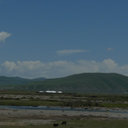Soil microbial community structure and function responses to successive planting of Eucalyptus.
Avainsanat
Abstrakti
Many studies have shown soil degradation after the conversion of native forests to exotic Eucalyptus plantations. However, few studies have investigated the long-term impacts of short-rotation forestry practices on soil microorganisms. The impacts of Eucalyptus successive rotations on soil microbial communities were evaluated by comparing phospholipid fatty acid (PLFA) abundances, compositions, and enzyme activities of native Pinus massoniana plantations and adjacent 1st, 2nd, 3rd, 4th generation Eucalyptus plantations. The conversion from P. massoniana to Eucalyptus plantations significantly decreased soil microbial community size and enzyme activities, and increased microbial physiological stress. However, the PLFA abundances formed "u" shaped quadratic functions with Eucalyptus plantation age. Alternatively, physiological stress biomarkers, the ratios of monounsaturated to saturated fatty acid and Gram+ to Gram- bacteria, formed "n"' shaped quadratic functions, and the ratio of cy17:0 to 16:1omega7c decreased with plantation age. The activities of phenol oxidase, peroxidase, and acid phosphatase increased with Eucalyptus plantation age, while the cellobiohydrolase activity formed "u" shaped quadratic functions. Soil N:P, alkaline hydrolytic nitrogen, soil organic carbon, and understory cover largely explained the variation in PLFA profiles while soil N:P, alkaline hydrolytic nitrogen, and understory cover explained most of the variability in enzyme activity. In conclusion, soil microbial structure and function under Eucalyptus plantations were strongly impacted by plantation age. Most of the changes could be explained by altered soil resource availability and understory cover associated with successive planting of Eucalyptus. Our results highlight the importance of plantation age for assessing the impacts of plantation conversion as well as the importance of reducing disturbance for plantation management.



